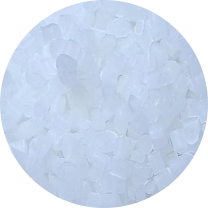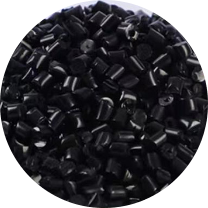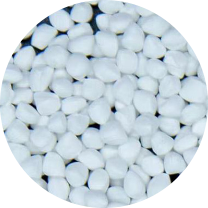How cost-effective is using FPM Functional Property Masterbatch versus adding functional additives directly to plastics?
How cost-effective is using FPM Functional Property Masterbatch versus adding functional additives directly to plastics? How to achieve the economy of FPM while ensuring product performance?
The cost-effectiveness of using FPM (Functional Property Masterbatch) versus directly adding functional additives to plastics varies depending on a variety of factors, including the type of functional additive, the concentration required, the production cost of the FPM, processing efficiency, and the market for the final product Demand etc.
Cost-benefit analysis
Centralized and large-scale production:
The production of FPM usually involves centralized and large-scale production processes, which helps reduce the production cost of unit products because large-scale production can spread fixed costs and improve production efficiency.
Simplify the machining process:
Using FPM simplifies plastic processing because the functional additives are pre-mixed with the carrier resin. This reduces processing steps and potential processing issues, potentially lowering production costs.
Stability and consistency of functional additives:
FPM controls the dispersion and stability of functional additives through specialized processes, which helps reduce waste and improve product quality consistency.
Inventory management:
Using FPM reduces inventory management complexity because only one or a few FPMs need to be managed, rather than multiple different functional additives.
Utilization of functional additives:
By precisely controlling the concentration and dispersion of functional additives, FPM can improve the utilization rate of functional additives and reduce waste.
Realizing the economics of FPM
Choose the right FPM:
Select an FPM with appropriate functionality and cost-effectiveness based on the product's performance needs and cost budget.
Optimize FPM recipe:
Work with FPM suppliers to optimize FPM formulations to reduce costs or improve functionality.
Improve processing efficiency:
Optimize the plastic processing process to reduce processing time, energy consumption and waste to reduce costs.
Consider market demand and size:
Adjust FPM usage based on market demand and production scale to achieve cost-effectiveness.
Long-term cooperation and supply chain management:
Establish long-term cooperative relationships with FPM suppliers to ensure stable supply and reduce costs through supply chain management.
innovating:
Continuously develop new FPM formulas and production processes to improve functionality, reduce costs or meet new market demands.
Using FPM can be cost-effective compared to adding functional additives directly to plastics, but the specific benefits depend on a variety of factors. By selecting the appropriate FPM, optimizing the formula and processing process, improving processing efficiency, considering market demand and scale, establishing long-term cooperative relationships, and continuing R&D innovation, the economy of FPM can be achieved while ensuring product performance.

Halogen-free Flame Retardant Masterbatch PP Master Batches
The cost-effectiveness of using FPM (Functional Property Masterbatch) versus directly adding functional additives to plastics varies depending on a variety of factors, including the type of functional additive, the concentration required, the production cost of the FPM, processing efficiency, and the market for the final product Demand etc.
Cost-benefit analysis
Centralized and large-scale production:
The production of FPM usually involves centralized and large-scale production processes, which helps reduce the production cost of unit products because large-scale production can spread fixed costs and improve production efficiency.
Simplify the machining process:
Using FPM simplifies plastic processing because the functional additives are pre-mixed with the carrier resin. This reduces processing steps and potential processing issues, potentially lowering production costs.
Stability and consistency of functional additives:
FPM controls the dispersion and stability of functional additives through specialized processes, which helps reduce waste and improve product quality consistency.
Inventory management:
Using FPM reduces inventory management complexity because only one or a few FPMs need to be managed, rather than multiple different functional additives.
Utilization of functional additives:
By precisely controlling the concentration and dispersion of functional additives, FPM can improve the utilization rate of functional additives and reduce waste.
Realizing the economics of FPM
Choose the right FPM:
Select an FPM with appropriate functionality and cost-effectiveness based on the product's performance needs and cost budget.
Optimize FPM recipe:
Work with FPM suppliers to optimize FPM formulations to reduce costs or improve functionality.
Improve processing efficiency:
Optimize the plastic processing process to reduce processing time, energy consumption and waste to reduce costs.
Consider market demand and size:
Adjust FPM usage based on market demand and production scale to achieve cost-effectiveness.
Long-term cooperation and supply chain management:
Establish long-term cooperative relationships with FPM suppliers to ensure stable supply and reduce costs through supply chain management.
innovating:
Continuously develop new FPM formulas and production processes to improve functionality, reduce costs or meet new market demands.
Using FPM can be cost-effective compared to adding functional additives directly to plastics, but the specific benefits depend on a variety of factors. By selecting the appropriate FPM, optimizing the formula and processing process, improving processing efficiency, considering market demand and scale, establishing long-term cooperative relationships, and continuing R&D innovation, the economy of FPM can be achieved while ensuring product performance.

Halogen-free Flame Retardant Masterbatch PP Master Batches
prevNo previous article
nextWhat are the application prospects of FPM Functional Property Masterbatch in recycling plastics?


 English
English 中文简体
中文简体 한국어
한국어 عربى
عربى













